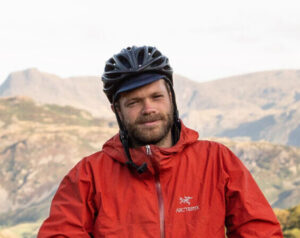Home Interview The Only Person You’re Racing is Yourself
The Only Person You’re Racing is Yourself
Feature type Interview
Read time 12 min read
Published Sep 18, 2021
Author Chris Hunt
Photographer Markus Stitz
When it comes to exploring the limits of human endurance by bike, for two decades the name Mark Beaumont has continually led the pack. His cycling portfolio includes a world record ride from Cairo to Cape Town as well as the fastest round the world cycle which he did in 2017. His expeditions on two wheels however have been solitary affairs – essentially huge individual time trials spanning several months at a time. They’ve also been almost entirely on asphalt. This year though, that changed.
In 2021 Mark entered GBDuro: a 2000km mixed terrain self-supported bikepacking race from Lands End to John O’Groats. Navigating a route through the UK’s best national parks and most challenging landscapes, the race is the brainchild of the heads behind The racing Collective, a not-for-profit environmentally focussed bikepacking club.
Despite being his first official race and his first toe dip into the world of riding off road, amongst the 60 who joined him on the start line, Beaumont was the first to cross the line. A little after he’d recovered from the race, I caught up with Mark to chat race strategy, what he thought of the route and how to pick yourself up during the darkest moments in an event like this.
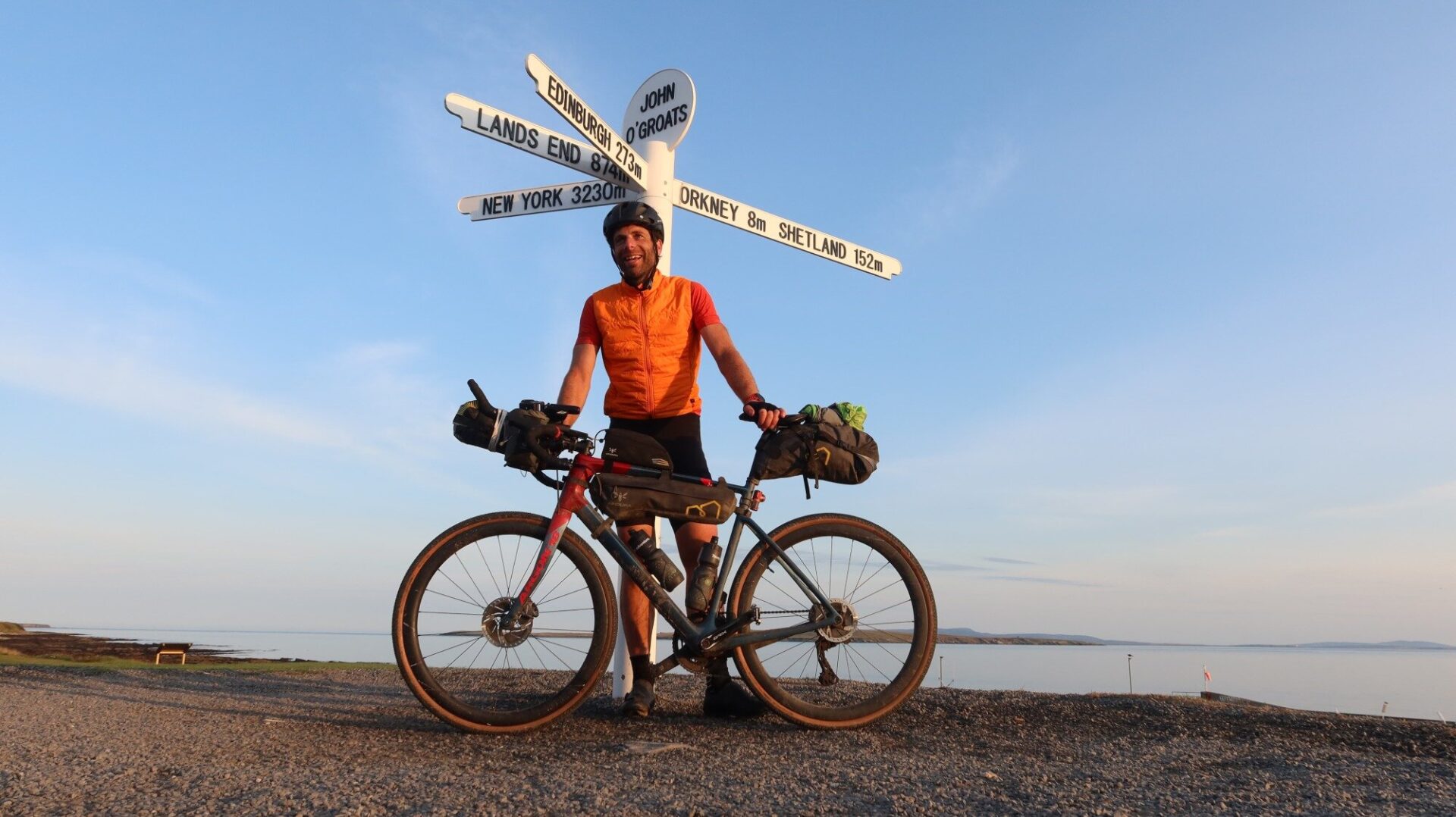
Having just won it, there are few people better suited to describing what the heck GBDuro is – so for those who don’t know, how would you describe the race?
GBDuro is the ultimate British cycling adventure, a mad combination of gravel and road, covering nearly 2000km from Land’s End to John O’Groats. In character, it harks back to the original Tour de France, with massive stages that go non-stop, through the night, self sufficient. At the end of each stage, the racers regroup for another mass start. It’s is a wonderful time to share stories and recoup, which creates a unique camaraderie for this event.
But GBDuro is not for the faint hearted – this year 250 people applied to take part. Starter places were limited to 60, and of those only 14 finished within the allotted time. It is truly a bike and body breaking ride of endurance, showcasing the British countryside and weather in all of its glory.
I imagine you’ve ridden LEJOG several times and in various forms, but despite a ton of experience in expedition riding, this is your first actual race, right – how did you find that?
Indeed, I first cycled LEJOG, or should I say JOGLE, as I went against the wind the first time, when I was 15 years old, with my parents supporting me in our old Peugeot 405. That was my first solo ride, albeit with a support car. But this summer, some 23 years later, has taken the prize, with 3 separate Land’s End to John O’Groats missions in as many months. First off was a 2 man relay, which we completed at a leg screaming 23 mph average, and 39 hours and 40 minutes total time. Then a month later was the tandem World Record attempt, which has only been broken once since 1966, and is a very painful mission.
But GBDuro was the very first time I have stood on the start line with fellow racers, despite a lifetime of trying to break records. It was with a sense of excitement and imposter syndrome that I set out through Cornwall, wondering what I had gotten myself into.
It was with a sense of excitement and imposter syndrome that I set out through Cornwall, wondering what I had gotten myself into
What was your race strategy, and how did it work out for you?
To be honest I didn’t really have a race plan. I wanted to go fast and leave it all out there in terms of effort, but I had no preconception in terms of where that would leave me in the race compared to others. The start was a bit of a scramble, through a few hours of tricky single-track and I was comfortably in the middle of the pack. But once we hit the first section of tarmac I started catching people, and then I soon realised that races like GBDuro are more about minimising time off the bike, than how fast you go – so I decided simply not to stop, unless I was too tired to carry on. This tactic worked – and I would often pass bicycled propped up outside of cafes, as I did hit and run efforts on garages and ate whilst cycling.
Having had a lifetime of expeditions, there was a lot of relevant experience here, in terms of how to cycle through the night and spending very long hours in your own head without taking breaks. This approach worked well, and as the race went on I slept even less – for stages 3 and 4 I didn’t stop at all.
The 470km from Cumbria to Loch Lomond in 33 hours straight was particularly tough, but the heavy rain made it easier to not-stop, knowing that if I did, I would just get cold. So sometimes you need a stick, as well as a carrot, to crack on and keep racing.
So for you with a road background this is a bit of a leap away from your typical bag – how did you find so many days racing off-road back to back?
I had barely been on a gravel bike before 2020, so it has been a very steep learning curve. And whilst I had a similar bikepacking setup for the Cairo to Cape Town world record, that was mainly all road, so taking a maiden setup over often technical single track, lifting it over tens of locked gates and sections of hike-a-bike was tough.
I found it particularly painful on my hands, from the constant tough terrain. You just need to zone out from the pain sometimes – but a bit of suspension would have been lovely for some of those sections through the Yorkshire Dales and the Scottish Highlands.
I certainly felt myself getting smoother and building confidence as the race went on. But all along I was riding very defensively, trying to protect the bike in very rough terrain. Even still, I managed to slash the sidewall of my front tire, which meant a 3 hour walk out to finish a stage.
The aim of the route is to experience the best of the UK’s wild spaces – does it achieve that in your eyes?
Absolutely. I thought that I knew the British Isles pretty well from all my travel and documentary making. But this really is a staggering, diverse and beautiful route. I have posted the route as a collection on my komoot profile and would encourage anyone to go back and explore sections by foot or by bicycle. But perhaps do so by day, as I missed a lot of the beautiful bits by riding through the night – and if you have the choice, maybe don’t tackle it in 500km chunks. That level of endurance can start to kill your appreciation of the wild places and scenery!
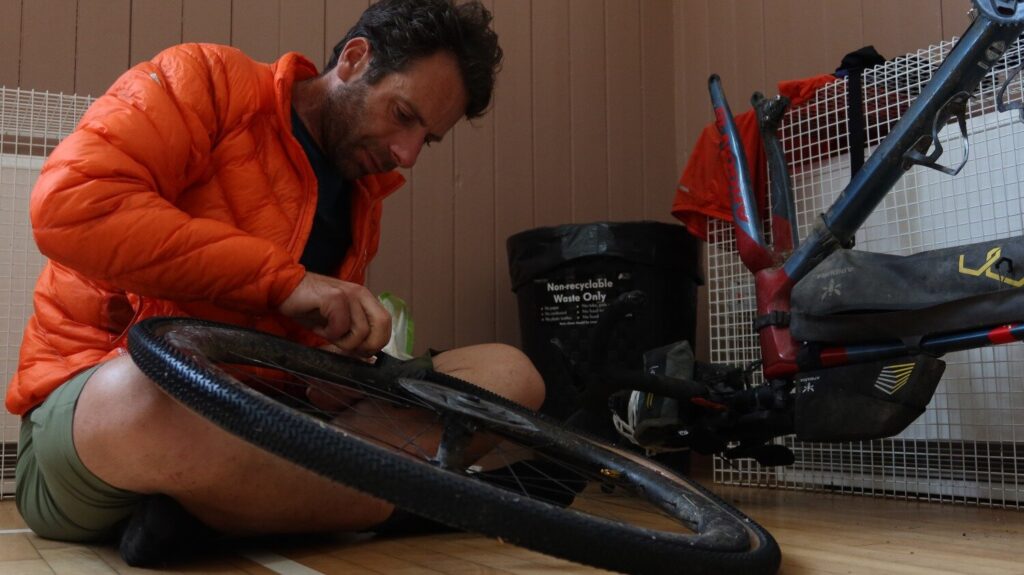
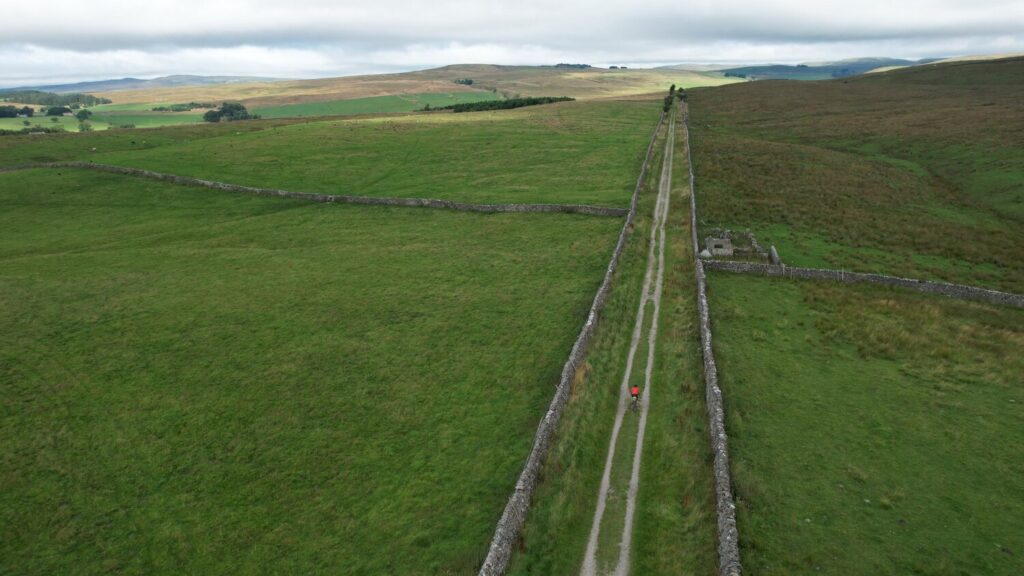
You must have gone through some pretty big highs and lows during this – can you talk me through some of those and some of your personal tactics for dealing with them?
The first stage was the longest by far at 630km. I raced this from 8am through until 5am two days later, with a few hours sleep, under the stars on Beacon Hill near Bristol. This was such a massive step into the unknown, that I was quite motivated by the adrenaline of the start. It got harder in the following stages as I didn’t have the same fresh legs and sense of heading into the unknown.
That 2nd stage is where most of the field scratched – by the time we reached Manchester, so many racers had quit. A low point was waking up at checkpoint 1, in the pouring rain, in a field of soaking bike racers, to pack up and start a near 500km of racing over some of the toughest climbs you can imagine. At moments like this your focus is kept very short – you can’t think about the next day of the next stage, you are just packing up a soaking tent, trying to keep warm and starting your legs turning.
Everyone was putting on a brave face, but we had some wild Welsh weather, and then the terrain was brutal. It is the only time in my adult life that I had pushed my bike up a tarmac road – it was that steep and I was so shattered. Another real low point was coming over the massive Corrieyairack Pass, near Fort Augustus, looking forwards to a 10 mile off-road descent, only to have a mechanical and have a painful 3 hour walk out. Already having been awake for 30 hours, I was falling asleep as I walked down that never-ending mountainside!
In contrast, the final night was absolutely magical – a full moon meant that I barely needed any lights in those final miles to John O’Groats – it was such a stunningly beautiful place to find myself, tired, hungry, but in awe of the landscape around me, bathed in moonlight.
So being self-supported your bike set-up and kit are a big part of your strategy – can you talk us through what you took and how it worked out for you?
I was riding an Argon18 Dark Matter, which was setup with GRX Di12 48-31, 11-34. Bag-wise I was setup with Apidura, including trying their new aero front bag. My luxury item was a Vango Hydrogen tent, which I was very happy with, as most of the riders got soaked through in their bivvy bags – never compromise on a good nights sleep! And clothing, I only had one set, the ones I wore, which was the Endura Reiver bib shorts and jersey. My tires were Swalbe G-One R. So I had an ultra-light setup, no real spares except for a few parts for bike breakages and I was overall pretty pleased with the choices. It was fun looking around on the start-line, seeing the wide variety of setups.
An event like this is obviously physically tough in far more ways than a typical bike race – what’s the recovery process been like?
I haven’t been that sleep deprived for a very long time, maybe since rowing the Atlantic Ocean. So it definitely took half a week or so to not feel ‘hungover’ – which is the best way of describing that level of sleep deprivation. The skin on the heel of my hands and my feet has since peeled off, which is pretty yucky, but shows the damage you do from such long periods being both wet and also the constant impact of off-road riding. My fingers were pretty numb for about 10 days as well. Apart from that, I have been absolutely fine and enjoyed getting back on my bike for some easier rides since.
Having been awake for 30 hours, I was falling asleep as I walked down that never-ending mountainside
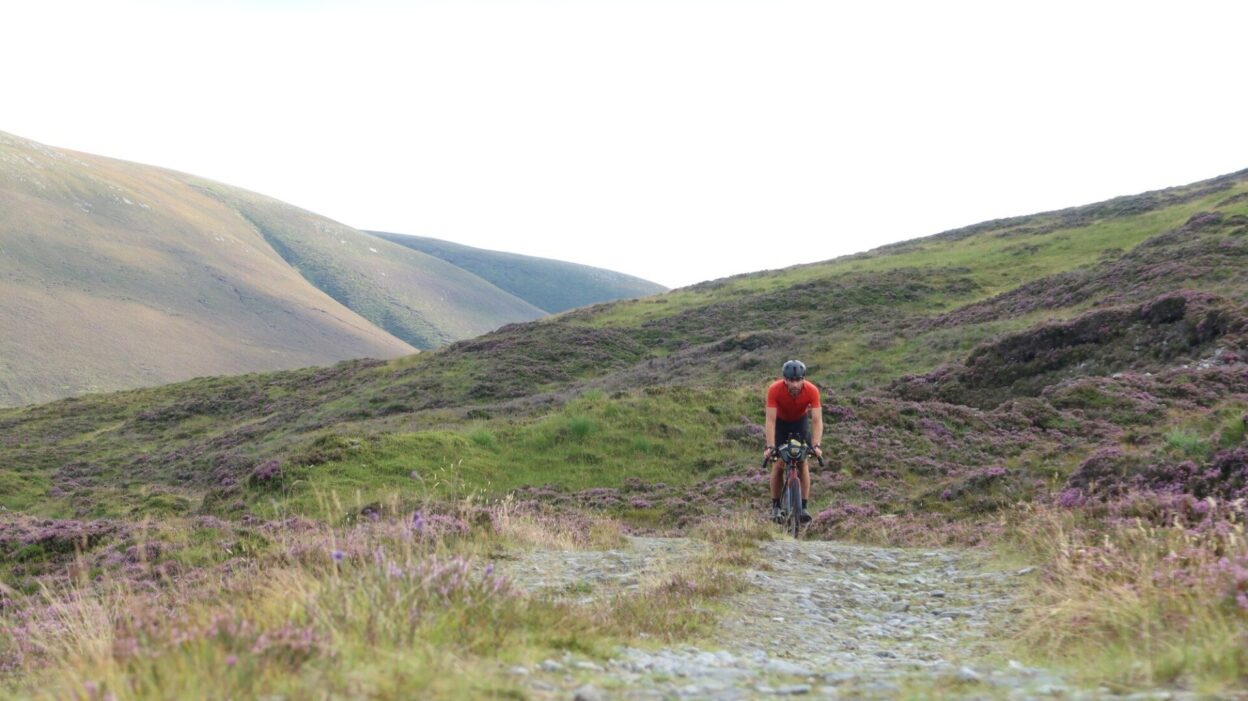
People talk a lot about how these kinds of endurance rides offer personal insight and life lessons – how true does that ring for you?
The only person you are really racing in an event like GBDuro is yourself. You learn so much about your own identity, your motivation, your insecurities and your inner drive when left alone on long races. Someone commented to me at the start ‘endurance gravel races are never won at lunchtime’ – and whilst being amusing, this is so true. We can all ride our bikes when the sunshines and we have a tailwind but you learn more about yourself in a headwind at 3am. These races are life stripped back to its most raw – your only purpose is to keep the momentum, to fuel, hydrate and keep those legs turning. In that sense life is at its most raw and most rewarding.
What do you think is the role of extreme events and rides like this in inspiring and encouraging more people to get outside and on bikes?
GBDuro is not for everyone. In fact, only a very few need apply. But the dot watching community is considerable and growing. You don’t need to ride GBDuro at race pace to be inspired and influenced by it. We need events like this to push athletes to their limits, to show what adventure cycling can be, and to showcase wild places. So yes, extreme events are not for the masses – but like the Olympics (and the US Open), you don’t need to compete at this level to be influenced positively by people who do.
Last weekend I went for a ride with Howard Perkins, who is 59 years old and was the oldest finisher of GBDuro this year. He didn’t complete because he was the strongest, or fastest or most able. He completed because he didn’t give up. Nothing stood in his way and he had the experience to find a way through. That has inspired me. I just hope I can still be riding my bike like Howard in 20 years time.
What’s next? Has this given you the bug for competition?
Yes, for sure. I would love to do some more races. In fact I would have a bucket list of the worlds most iconic endurance races… so watch this space. For now, I am off to cycle to the beach with my 8 year old daughter, which is equally rewarding.
You can find the full route on Mark’s komoot profile here.
Established in 2016, The Racing Collective applies the ultracyclist mindset (self-supported, self-actualised, self-motivated) to go beyond ‘Leave No Trace’ to leave the world in a better state than we found it. As such, the event enforces a no-fly rule, meaning riders must get to/from the start/finish without taking a flight. In addition, the club’s long-term aim is to establish a series of rewilding projects where they’ll buy land and rewild it through the restoration of natural forests and wildlife for our adventurous ancestors to enjoy. Find out more here.
Don’t miss a single adventure
Sign up to our free newsletter and get a weekly BASE hit to your inbox
Other posts by this author
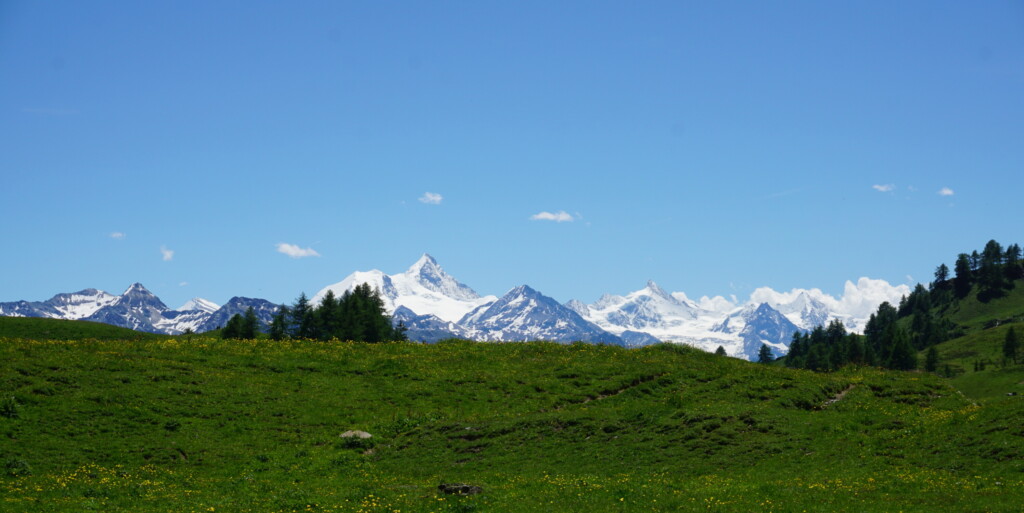
Story • Chris Hunt • Jul 04, 2023
Evolution of Flow: E-mountain Biking in the Swiss Alps
Exploring Crans Montana and the Tièche valley on two wheels
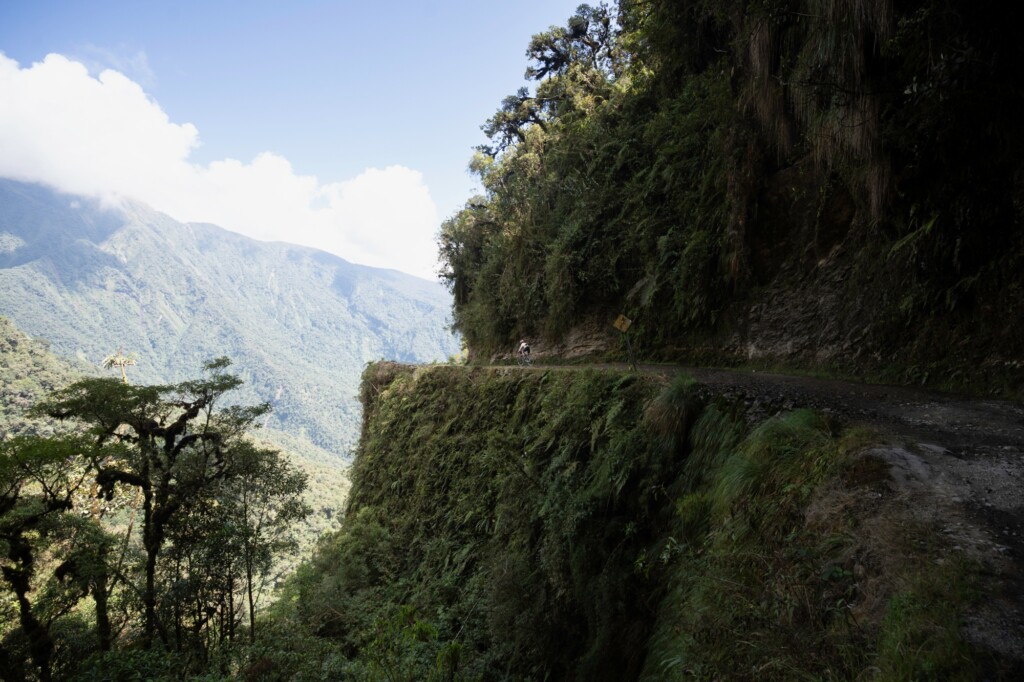
Story • Chris Hunt • May 05, 2023
Life-affirming discoveries near Bolivia’s Death Road
Sami Sauri explores the winding gravel tracks of the Yungas surrounding La Paz, Bolivia

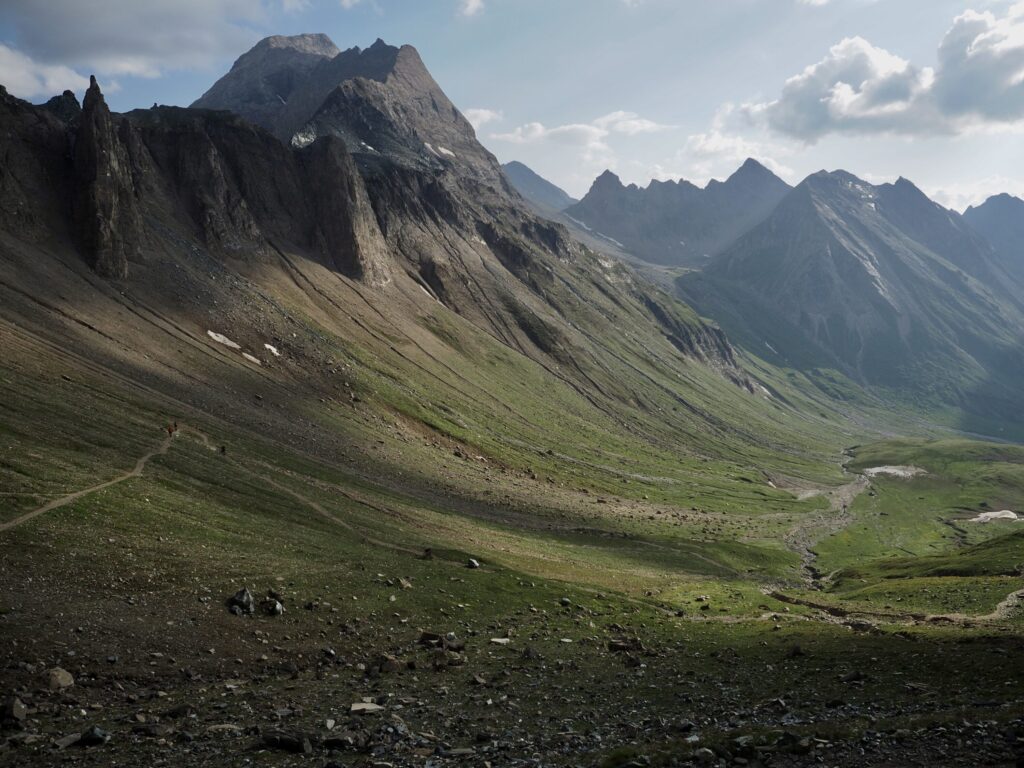
Story • Chris Hunt • Feb 09, 2023
Throat of The Dog: Bikepacking the Zillertal Alps
A 175km traverse of the mountainous spine between Italy and Austria
You might also like
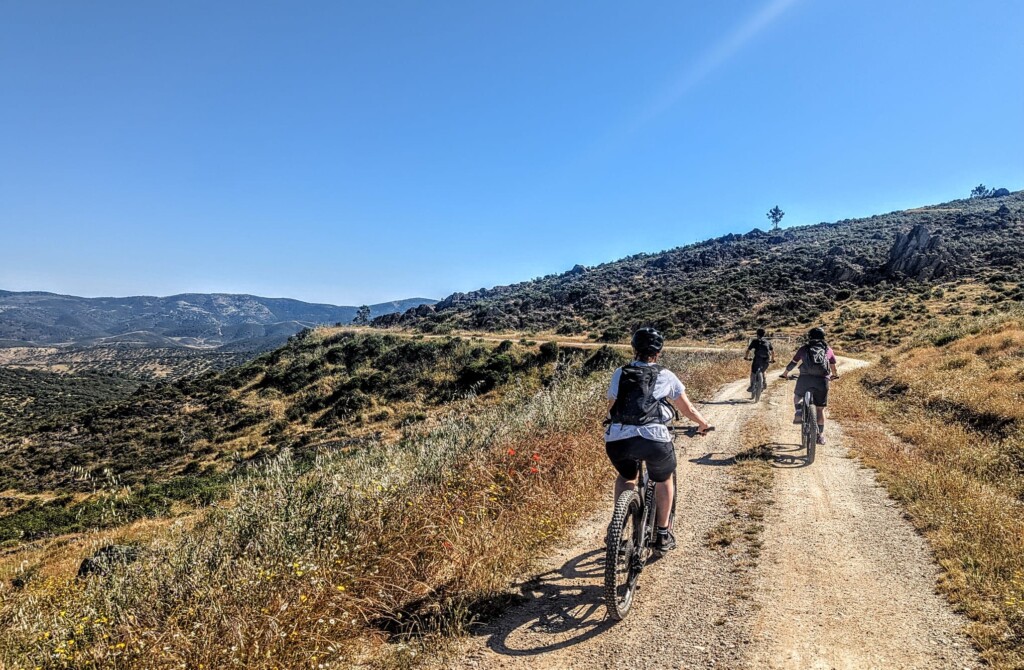
Story • Matthew Pink • May 30, 2025
Smuggler lanes and donkey trails: e-MTB in Andalusia
Hazy days zig-zagging the Andalusian sierra through a mesh of secret trails
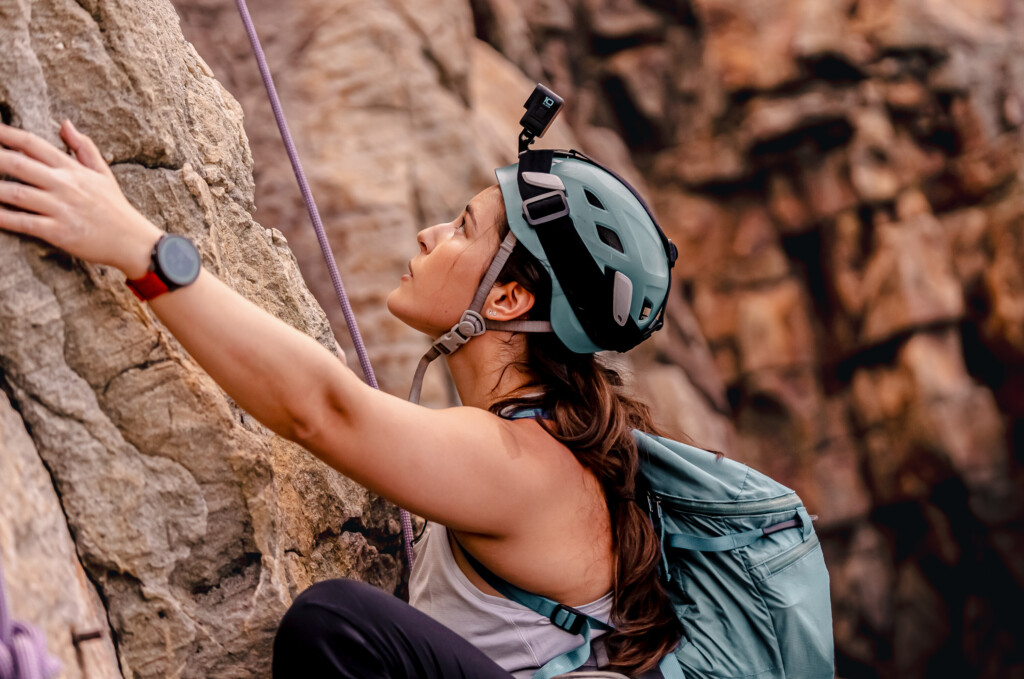
Photo Essay • BASE editorial team • Mar 18, 2024
Hunting happiness through adventure in Taiwan
BASE teams up with adventurer Sofia Jin to explore the best of Taiwan's underrated adventure scene.

Story • Chris Hunt • May 05, 2023
Life-affirming discoveries near Bolivia’s Death Road
Sami Sauri explores the winding gravel tracks of the Yungas surrounding La Paz, Bolivia


